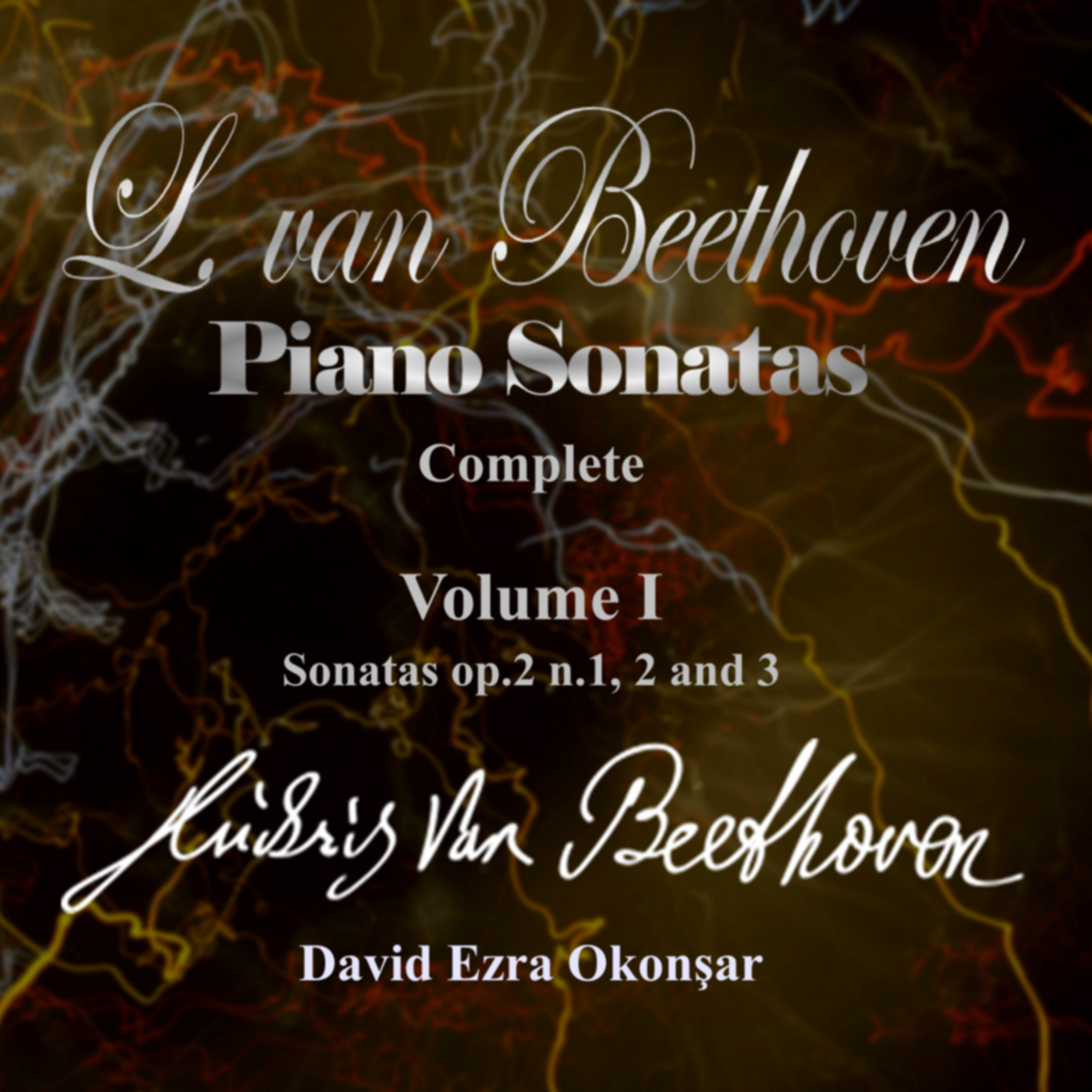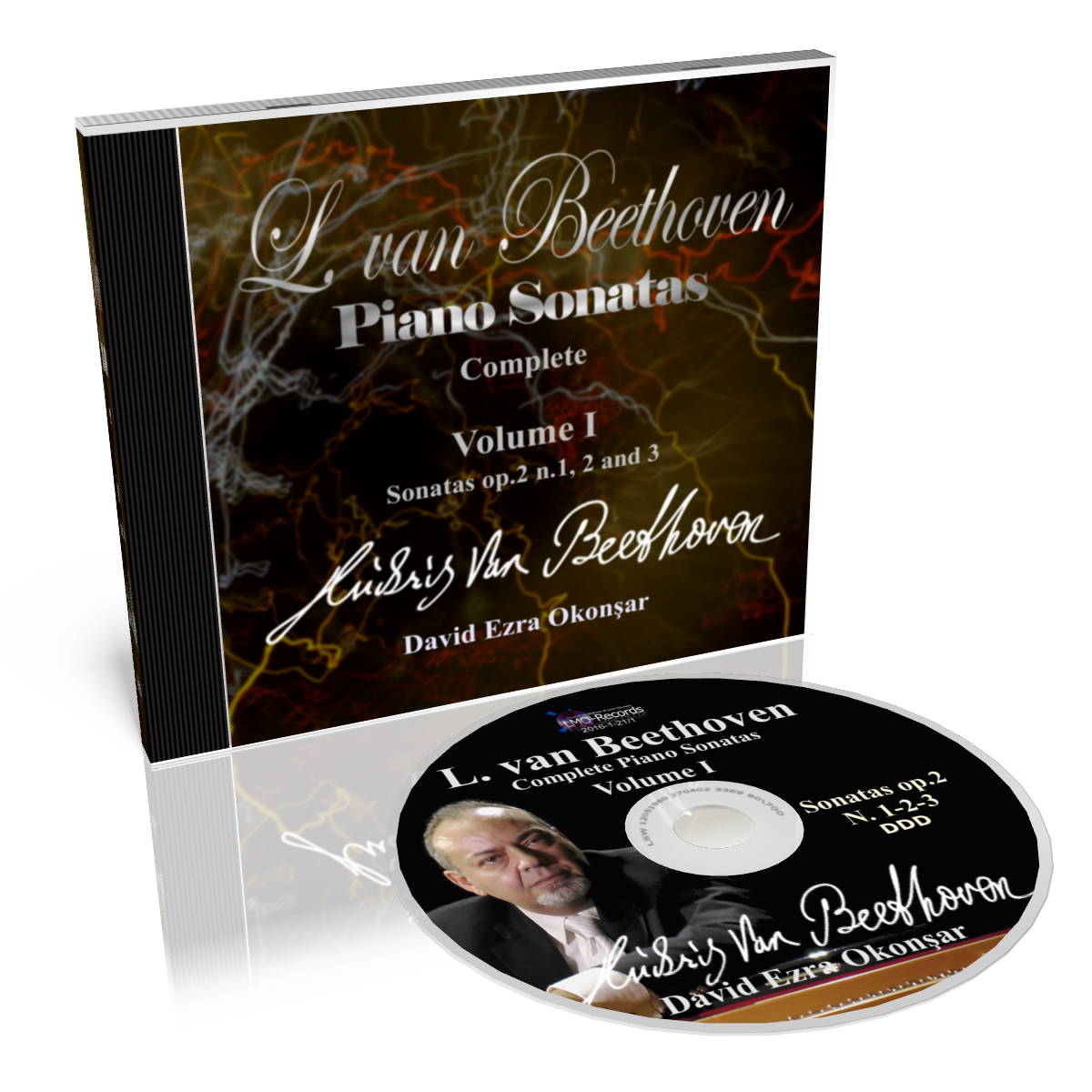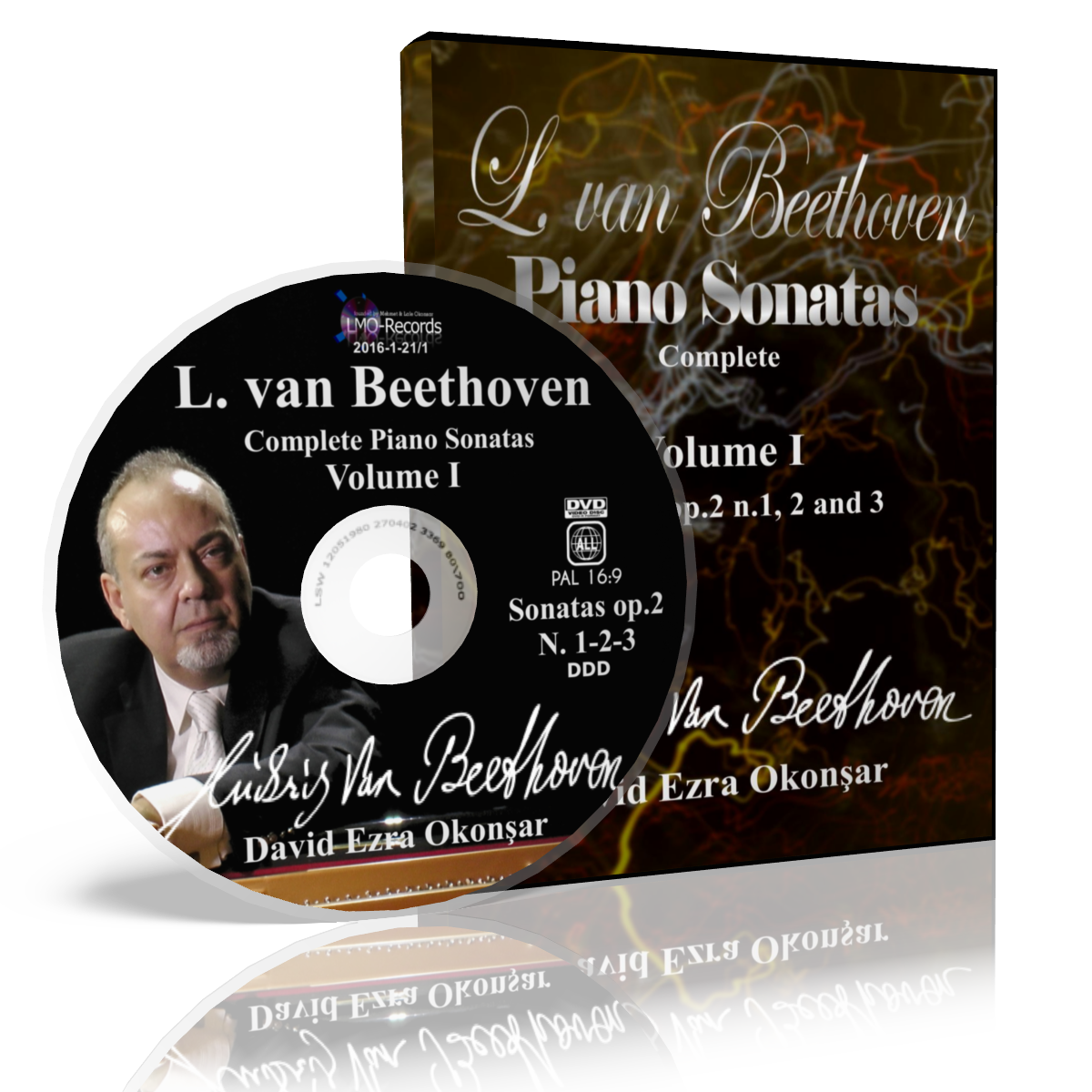
L. van Beethoven
Piano Sonatas VOL. 1 op. 2
Volume 1 of the series:
The Complete Piano Sonatas by Ludwig van Beethoven



|
It has been said so many times that Beethoven revolutionized the piano. He extended all the background he got from Haydn, Mozart but also from Carl Philipp Emanuel Bach and Muzio Clementi to such a level that the word "revolution" is not an over-statement. He introduced the "romantic piano ecriture" by large steps, following the evolution of his artistic temperament. On one side the assessment of virtuosity to the requirements of the musical inspirations and lyricism, a piano which does not mimic some orchestral instruments but gets alive as a full symphonic orchestra. An orchestra where not only each instrument has its own sound-color but also the ensemble has one tremendous power never heard of before, and on the other side, the evolution of classical forms towards new forms of expression elaborated with a "new musical logic" can only incompletely describe this gigantic work. Regarding the thirty-two Sonatas Wilhelm Kempf said: "Beethoven must be experienced. Experience him and the listeners will also. Beethoven requires pianistic abilities never heard of before or after. The pianist's hands are asked to perform things so unique that years of skillful practice is needed. What is even more strange is that in each of his great sonatas, new abilities are required which are not acquired with the previous training. When the technical background is solid we can then go to conquest the Beethovenian universe. However, as this is a universe; it can not be conquered in one day." The thirty-two sonatas form in the output of the composer a large, continuous path. As commonly stated, there are three main "styles" or periods in Beethoven's creative life. To use Franz Liszt's somewhat empathetic expression: "the adolescent, the man and the god." The somewhat artificial subdivision of Beethoven's styles: "early - middle - late", as reflected in the piano sonatas is blurry. According to one scheme the thirty-two sonatas are divided as fifteen in the first period (until 1802), eleven in the second (1802 - 1814) and six in the last (1814 - 1827). That is: the early sonatas are from opus 2 to opus 28 "Pastoral"; middle ones: opus 31 to opus 81a "Adieux" and last period is from the opus 90 to opus 111. Another scheme I find more stringent is opus 2 to opus 26 ("Funeral March") in the first period; opus 27 to opus 90 in the middle and the late period starting at opus 101. Of course, both are over-simplified schemes, not in contradiction with historical and biographical facts but they may be misleading specially when examining the first two periods. All of Beethoven is present in all his works. According to Alfred Brendel: "Beethoven piano sonatas are unique in three respects. First, they reflect all of the composer's genius until the last Quartets. The Diabelli Variations and the last series of Bagatelles which then conclude all his output. Second, there is no "less important" pieces in them, this separates them form the series of Variations which are not equal in creativity and masterly crafting. Lastly Beethoven never repeats himself in his sonatas. Each one is a totally new concept and realization." Sonata N.1 in F minor op.2 n.1 This first "Grande Sonate" belongs to the series opus 2 with the two following ones and are dedicated to the "Docteur en Musique Joseph Haydn". Composed between 1794 and 1795 they were first published by Artaria in Vienna with the mention "Sonatas for pianoforte or Harpsichord". They were first performed by the composer, before Haydn, in a private concert at the Prince Lichnowsky's court. Audience acclaimed the new compositions, except for Haydn, who, presumably, liked them but recommended his pupil (Beethoven) to keep learning. But we well know, from many other sources the complex relationship between one illustrious and very distinguished yet somewhat distant teacher and his greatly talented pupil. This first Sonata still has a Menuet as a third movement, very typical with its major key Trio and a rather conventional second (slow) movement in the manner of a Haydn or Mozart, deployed as a theme and ornamental variations. This second movement "Adagio" seems to be written as a development of a quartet in C Major from 1785. The first theme in the dark and tormented key of F minor is deployed as an arpeggio in the first movement, Allegro. The F minor arpeggio as a theme will, interestingly, re-appear in the famous "Appassionata". Both themes do have a strange similarity. The following movement Adagio presents a serene theme in F major, masterly varied in its diverse expositions, similar to the best slow movements of Haydn and Mozart sonatas. The elegant Menuetto is, following the tradition, crafted with a typical strings-trio type of ecriture. One of the many places in Beethoven's piano works, where the pianist must have a perfect legato touch and create the illusion of an ensemble of strings players. The last movement, uncommonly indicated Prestissimo and half-time simultaneously, expands the possibilities and sound limits of the instrument and the average performing limits of the pianists of the time (or of all times?) to new levels. Mozart never employed the indication Prestissimo in a last movement. This, combined with the half-time time signature, the block chords and the extremely contrasting dynamics working as a theme already present us with a new language in music. Sonata N.2 in A major op.2 n.2 Right after the tormented, somewhat tetchy first sonata, Beethoven surprises us with a bright, luminous and joyful one in the most appropriate key for the mood: A major. As Jorg Demus put it, this sonata brings the most apparent hommage to Joseph Haydn. A bounding theme in unison octaves and one a chromatically raising second theme are followed with a development section which starts with an immensely effective modulation from C major to A-flat major. The Largo Appassionato may be the first of Beethoven's deep and sublime slow movements. A fully orchestral writing deployed as a symphony's slow movement is a giant step from the keyboard-style ornamental variations commonly used until then by the classical masters. For the first time Scherzo replaces the Menuetto as a third movement. The moderately conservative sound-range of a typical Menuetto is now abolished and the music expands over a wide range on the keyboard with fast and brisk jumps. The Rondo of the last movement is characteristic with its large arpeggio (or later a running scale) leading to the high E note and this note's legato "drop" to a G-sharp far below. An unusually large interval is made the theme's distinctive aspect. The Rondo deploys as A-B-A-C-A-B-A-coda and the given indication Grazioso best describes the entire movement. Sonata N.3 in C major op.2 n.3 Composed and premiered simultaneously with the preceding ones, this sonata is specially brilliant and virtuoso. The first theme gets all its energy with the fast alternation of simultaneous thirds, its main feature. The great Beethovenian who was Edwin Fisher beautifully described the lyrical second theme: "as if entering in a shaded forest in a sunny summer day.." The first movement is a fantastic deployment of energy presented with the most refined virtuosity on the keyboard, never written before. Extreme dynamics, syncopations, all kinds of trills abound all over. The second movement in E major has the characteristic sound color of all E major slow movements of Beethoven. They all start with a chord featuring the third degree (G-sharp) on the medium range octave of the piano. As Paul Badura-Skoda put it, starting with this sonata and all over the finales of opus 90 and opus 109 and including the second movement of the third concerto, that particular sound of the E major tonic chord with the third degree at that particular position gives those movements a warm and meditative characteristic. A fast and brisk Scherzo penned in a fugato style displays the usage of a wide keyboard range and features a Trio which may be the total opposite of the traditional Menuet trio. In the traditional Menuets, Trios are most often in a lighter tone, sometimes in a calmer tempo. Here we have the opposite: the "Trio" is articulated with demoniacal arpeggios covering a large range. The up run in parallel 3-6 chords constitutes the theme of the last movement constructed as a free-style Rondo. The choral-like second theme, according to Badura-Skoda is a big novelty in a sonata's last movement. The idea of inserting a choral-like theme within a similar context will be widely used by the German composers to follow. Badura-Skoda also points out the similarity of this theme with one in Brahms' opus 5 Third Sonata.
|
|||||||||||||||||||
| |
|||||||||||||||||||
| |
|||||||||||||||||||
|
|
|||||||||||||||||||
|



